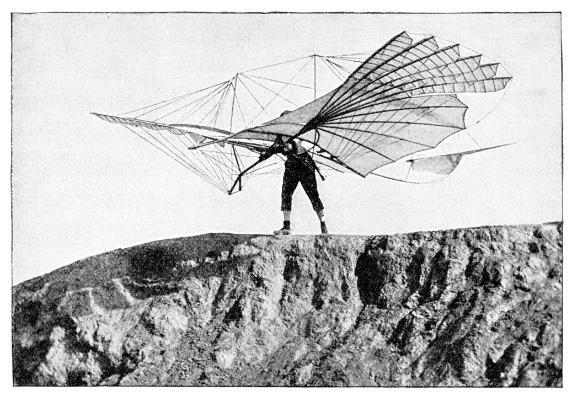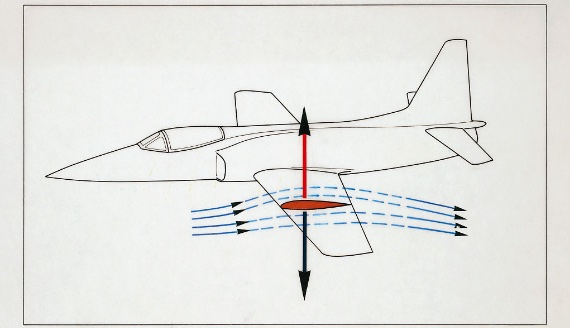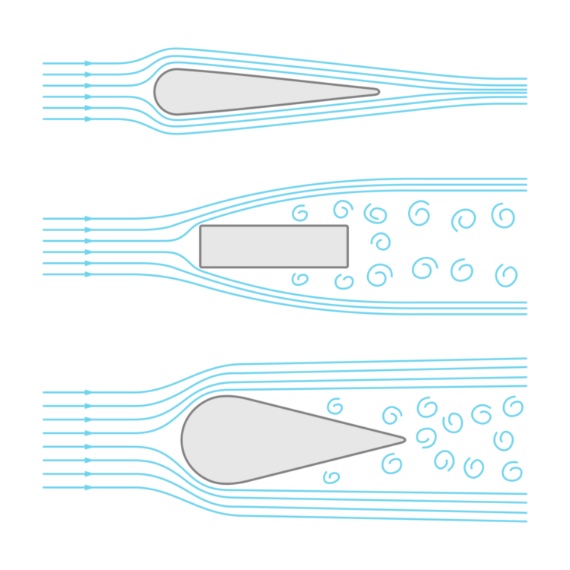Most of us have experienced the thrill of taking off in an airplane. The anticipation builds as the engines rev and the plane rumbles down the runway, picking up speed. And then, in a sudden shift, the vibrations stop, the ground falls away and you are airborne, carried aloft by the magic of flight. But have you ever thought about the physics behind this wonder? While we all understand that wings provide the lift, the science is actually far from simple. In fact, even after more than a century of powered flight, the debate over the best way to explain what keeps planes in the air continues, and poor explanations abound.

The shape of an airplane wing is designed to generate lift, which is the upward force that allows an aircraft to fly. Airplane wings typically, though not always, have a curved upper surface and a flat lower surface, and lift is the result of pressure differences between the two surfaces.
The “equal transit-time” explanation
The popular, though erroneous, explanation for how a wing generates lift is that because the upper surface is curved, the air passing above the wing has a longer distance to travel than air passing below the wing, so it must move faster. Bernoulli’s Principal is then cited to conclude that the faster moving air above must have lower pressure, which generates lift. This is the misleading “equal transit-time” explanation of aerodynamic lift, and it can be found in many textbooks and online (including ChatGPT).

University of Cambridge Professor of Aerodynamics Holger Babinsky is frustrated by the use of this myth to explain lift. In his article How do wings work? he writes: “The popular explanation of lift is common, quick, sounds logical and gives the correct answer, yet also introduces misconceptions, uses a nonsensical physical argument and misleadingly invokes Bernoulli’s equation.” There is no law in physics stating that air parcels separated at the leading edge of the wing have to reach the trailing edge of the wing at the same time. In fact, wind tunnel studies have clearly shown that the air above the wing actually travels much faster than the air below, reaching the trailing edge of the wing well before the air travelling along the lower surface.
Babinsky says that “the generation of lift does not require different distances around the upper and lower surfaces,” and invites us to “consider a sail that is nothing but a vertical wing (generating side-force to propel a yacht).” The airstreams travel the same distance on both sides of the sail.
A misleading demonstration
A common way to “demonstrate” how Bernoulli’s Principle explains lift is to hold a strip of paper at one end so it droops downward from gravity. Blowing across the upper part of the curved surface will cause the paper to rise. The explanation inevitably given is that because the air ejected by the lungs is moving faster than the surrounding air, it has lower pressure than the air below the paper, so the strip rises. However, the air leaving the lungs has the same pressure as the surrounding air. According to Babinski, “it is false to make a connection between the flow on the two sides of the paper using Bernoulli’s equation.” While differences in air pressure will cause air to speed up as it rushes from zones of higher to lower pressure (the explanation behind wind), changing the speed of air (for example by blowing) will not affect the pressure.

A more accurate explanation for why the paper rises is that it is a demonstration of the tendency of a fluid jet to stick to a convex surface. The surface of the paper is microscopically rough, and the boundary layer of the airstream tends to adhere to the surface. As the paper tries to redirect the airstream downwards, the airstream pulls upward on the curved strip, in accordance with Newton’s third law of motion (for every action (force) in nature there is an equal and opposite reaction), and the strip rises.
Newton trumps Bernoulli in explaining lift
But the paper demonstration helps us to understand why the air pressure is lower above the wing than below it. Just as the airflow from your lungs sticks to the surface of the curved paper when you blow over it, so too does the boundary layer of the airflow adhere closely to the curvature of the wing due to friction. As the horizontally moving air molecules above the wing are pulled downwards to remain close to the wing’s curved surface, the air is effectively stretched into a larger volume, creating a low-pressure field atop the wing that generates lift. And the increased speed of the air above the wing (mentioned above) is caused by the air rushing to fill the low-pressure field created by the curved shape of the wing.
But there is more to the story. As the airflow passes over the curved top of the wing it is deflected downwards, following the downward curve of the sloping wing. Applying Newton’s third law again, if the wing redirects the airflow downwards, the air must exert an equal upward force on the wing, which is lift. A key insight is that the pressure difference between the upper and lower surfaces of the wing, the downwash of the wing (air deflected downwards) and the lift force are all facets of the same phenomenon. One cannot exist without the other two.

What happens under the wing is easier to explain. If the underside of the wing is tilted relative to the airflow (called the angle of attack), it will push down on the air as it flows past, creating an equal and opposite (upward) force on the wing (Newton again). This force manifests itself as a high-pressure zone under the wing. As the angle of attack increases, more lift is generated, but there is also an increased risk of stalling, which occurs when the airflow over the wing suddenly separates from the surface, becomes chaotic and some of the lift is lost. Modern aircraft have systems designed to prevent stalling.
The lift generated by the underside of the wing explains why planes can sometimes fly upside down, and why a paper airplane with flat wings can stay aloft. When the angle of attack is optimal, enough lift is generated under the wing to keep the plane in the air, even if the top surface provides no lift. As Babinsky explains, “negative lift (which would be required for flying upside down) is simply a question of the angle of attack at which the aircraft flies.”
So the next time you see an airplane soaring overhead, or even a bird flying, remember that the curved shape of the wings and the angle of attack redirect the air downwards, creating pressure differences and an upward force in accordance with Newton’s third law, and giving us the miracle of flight.
Comments on this publication